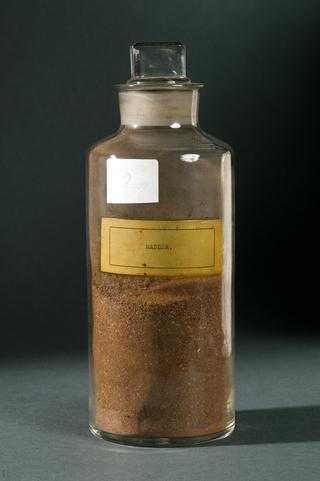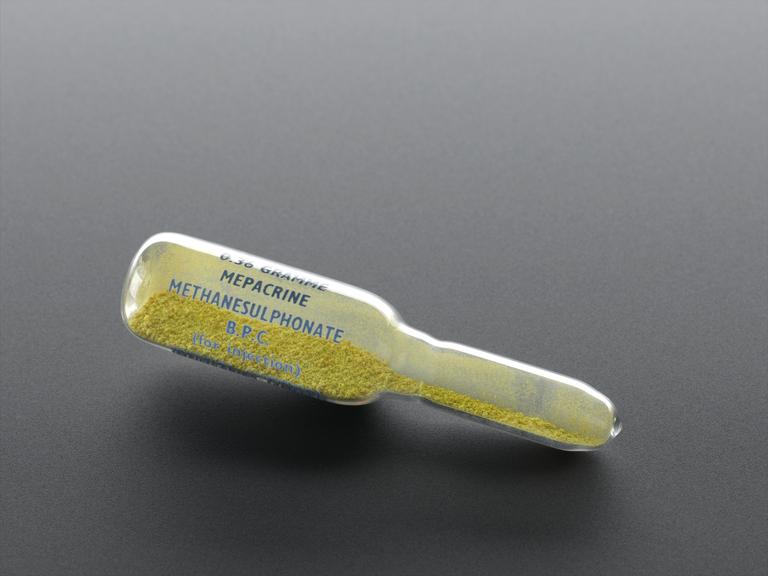
Glass phial of 'Mepacrine' an anti-malaria treatment, England, 1957-1975

Glass phial of 'Mepacrine' (yellow powder), 0.36g methasuphate, one of ten anti-malarial drug preparations from ICI Ltd. (Pharmaceuticals Division), 1951-1975.
‘Mepacrine’ is a yellow powder made by ICI Ltd to prevent and treat malaria. The powder is mixed with a liquid and then injected into the body. The treatment was introduced in Germany 1933 and was produced in large quantities for Allied troops during the Second World War. Troops needed to take preventative measures against malaria when fighting in areas such as North Africa and the Middle East, where the disease is common. Unfortunately, when used for a long time, the treatment turns the skin yellow. Like other anti-malarial drugs, it was found that Mepacrine has anti-inflammatory properties and it is used today to treat skin disorders.
Details
- Category:
- Industrial Chemistry
- Object Number:
- 1976-626/7
- Materials:
- glass
- Measurements:
-
overall: 71 mm 17 mm, 0.004 kg
- type:
- anti-malarial drug and phial
- credit:
- ICI Ltd. (Pharmaceuticals Division)




